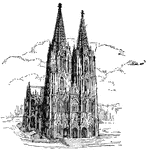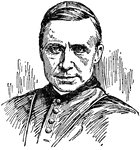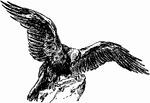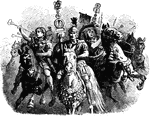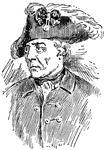
Frederick II
(1712-1786) King of Prussia from the Hohenzollern dynaasty, known as the founder of Germany's military…

Wing of an Eagle
"The more angular the wing of birds - that is to say, the longer the feathers on the edge of the wing…
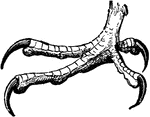
Foot of White-Headed Eagle
"In birds of prey the claws are powerful and hooked; in others the foot is flat, claws straight, and…

Foot of Honey-Buzzard
"In birds of prey the claws are powerful and hooked; in others the foot is flat, claws straight, and…

Foot of Cassowary
"In birds of prey the claws are powerful and hooked; in others the foot is flat, claws straight, and…

Bill of Eagle
"The beak or bill of birds is composed of two bony pieces, called mandibles, surrounded by a horny substance,…
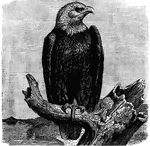
Bald or White-headed Eagle (Haliaetus Leucocephalus)
"Its flight is as powerful as that of the golden eagle, and its adroitness and strength are even greater.…
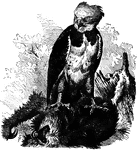
Harpy-Eagle (Harpyia Destructor)
"The Harpy or Crested Eagle is the model species of the genus to which it belongs. It measures nearly…

Red-Necked Falcon, or Turumdi (Falco Chiquera)
"The falcons, it may be said, realize the ideal of a bird of prey. They feed only on living animals,…
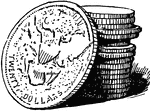
Double Eagles Stack
A stack of double eagle coins. A Double Eagle is a gold coin of the United States with a denomination…
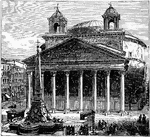
The Pantheon at Rome
The Pantheon is a building in Rome which was originally built as a temple to all the gods of Ancient…
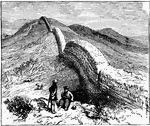
Hadrian's Wall
Hadrian's Wall is a stone and turf fortification built by the Roman Empire across the width of what…
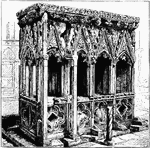
St. Alban's Shrine
Saint Alban was the first British Christian martyr. Along with his fellow saints Julius and Aaron, Alban…
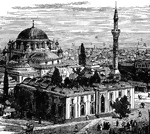
The City of Constantinople (Byzantium)
Byzantine Constantinople had been the capital of a Christian empire, see Christendom, successor to ancient…

Roman Amphitheatre at Arles
The Arles Amphitheatre is a Roman amphitheatre in the southern French town of Arles.

Roman Soldiers
The distinction between rank and unit type doesn't seem to have been as precise as in a modern-day army,…
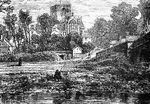
St. Asaph Cathedral
St Asaph Cathedral, (Welsh: Eglwys Gadeiriol Llanelwy) at St Asaph, Denbighshire, north Wales, is sometimes…
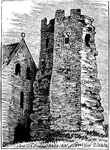
Roman Lighthouse, and Part of St. Mary's Church, Dover
The lighthouse on the Eastern Heights still stands in the grounds of Dover Castle to 80 foot (24 m)…
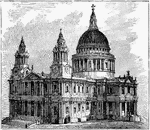
St. Paul's Cathedral
St Paul's Cathedral, is the Anglican cathedral on Ludgate Hill, in the City of London, and the seat…

The Door of the Roman Bridge
This image depicts the door leading to the Puente Romano, a Roman bridge in Cordoba, Spain.
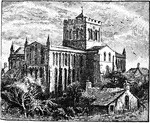
Hexham Abbey
There has been a church on the site for over 1300 years since Etheldreda, Queen of Northumbria made…

Bede's Tomb, Durham Cathedral
He is well known as an author and scholar, and his most famous work, Historia ecclesiastica gentis Anglorum…

Benedictine Monk
Within Roman Catholicism, a monk is a member of a religious order who lives a communal life in a monastery,…

Earls-Barton Saxon Tower
The influence is very much Roman, and this can be seen by looking at the doors and windows of the tower.…
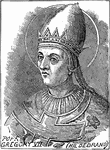
Pope Gregory VII
Pope Saint Gregory VII (c. 1020/1025 – May 25, 1085), born Hildebrand of Soana (Italian: Ildebrando…

Odo of Bayeux
Odo of Bayeux (c. 1036 – February 1097, Palermo), Norman bishop and English earl, was the half-brother…
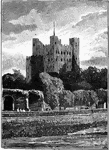
Rochester Castle
Rochester Castle stands on the east bank of the River Medway, in Rochester, Kent. It is one of the best-preserved…

St. John's Church, Lateran Palace, Rome
The Basilica of St. John Lateran (Italian: Basilica di San Giovanni in Laterano) is the cathedral of…

Mitre and Crosier
The mitre is a type of headgear now known as the traditional, ceremonial head-dress of bishops and certain…

General View of Rome
Rome is the capital city of Italy and Lazio, and is Italy's largest and most populous city, with more…

Cistercian Monk
The Order of Cistercians, sometimes called the White Monks, is a Roman Catholic religious order of enclosed…

Costume of a Bishop (12th Century)
The pontifical vestments, also referred to as episcopal vestments or pontificals, are the liturgical…
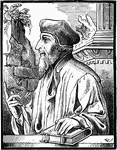
John Wycliffe
John Wycliffe (mid-1320s – 31 December 1384) was an English theologian, translator and reformist.…
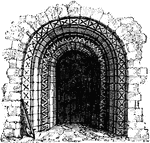
Norman Doorway
The term Norman architecture is used to categorise styles of Romanesque architecture developed by the…
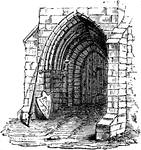
Early English Door
The most significant and characteristic development of the Early English period was the pointed arch…
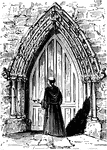
Decorated Doorway
The most significant and characteristic development of the Early English period was the pointed arch…

Decorated Arch and Piscina
A piscina or sacrarium is a shallow basin placed near the altar of a church, used for washing the communion…
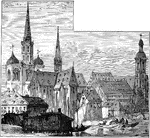
Constance Cathedral
The Cathedral of Constance (Konstanzer Münster in German) served as the central church of the diocese…
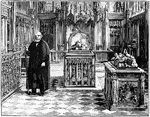
Beauchamp Chantry, St. Mary's, Warwick
The church foundations date back nearly nine hundred years, being created by Roger de Beaumont, 2nd…

King's College Chapel, Cambridge
Henry VI planned a university counterpart to Eton College, the chapel being the only portion that was…
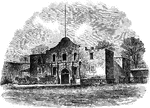
The Alamo
The Alamo, originally known as Mission San Antonio de Valero, is a former Roman Catholic mission and…

Hidalgo Castello
Hidalgo Castello was a Mexican Roman Catholic priest and revolutionary rebel leader. He is regarded…
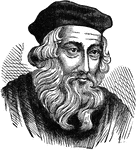
John Wycliffe
John Wycliffe (mid-1320s – 31 December 1384) was an English theologian, translator and reformist.…
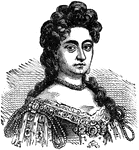
Mary I of England
Mary I (18 February 1516 - 17 November 1558), was Queen of England and Queen of Ireland from 19 July…

St. Paul's Cathedral, London (Interior)
St Paul's Cathedral, is the Anglican cathedral on Ludgate Hill, in the City of London, and the seat…
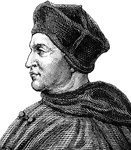
Thomas Cardinal Wolsey
Thomas Cardinal Wolsey (c.1470~1471 – November 28 or November 29, 1530), who was born in Ipswich,…
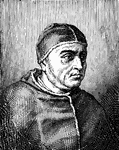
Pope Leo X
Pope Leo X, born Giovanni de' Medici (December 11, 1475 – December 1, 1521) was Pope from 1513…
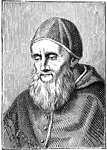
Pope Julius II
Pope Julius II (5 December 1443 – 21 February 1513), born Giuliano della Rovere, was Pope from…
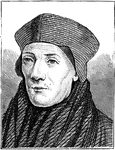
John Cardinal Fisher
John Cardinal Fisher (c.1469 – 22 June 1535), from 1935 Saint John Fisher, was an English Catholic…

A Carthusian
The Carthusian Order, also called the Order of St. Bruno, is a Roman Catholic religious order of enclosed…
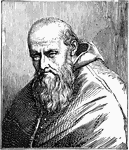
Pope Paul III
Pope Paul III (February 29, 1468 – November 10, 1549), born Alessandro Farnese, was Pope of the…
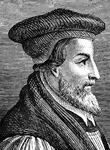
Bishop Hugh Latimer
Hugh Latimer (c. 1485-October 16, 1555) was the bishop of Worcester, and by his death he became a famous…
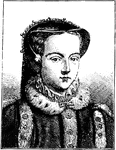
Queen Mary Tudor
Mary I (18 February 1516 – 17 November 1558), was Queen of England and Queen of Ireland from 19…
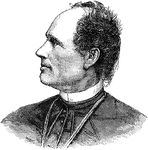
Josip Juraj Strossmayer
Josip Juraj Strossmayer (February 4, 1815 – May 8, 1905) was a Roman Catholic bishop, benefactor and…
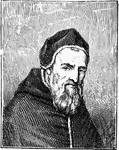
Pope Sixtus V
Pope Sixtus V (December 13, 1521 – August 27, 1590), born Felice Peretti di Montalto, was Pope…
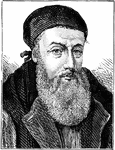
Archbishop Edmund Grindal
Edmund Grindal (c. 1519 – 6 July 1583) was an English church leader who successively held the…
